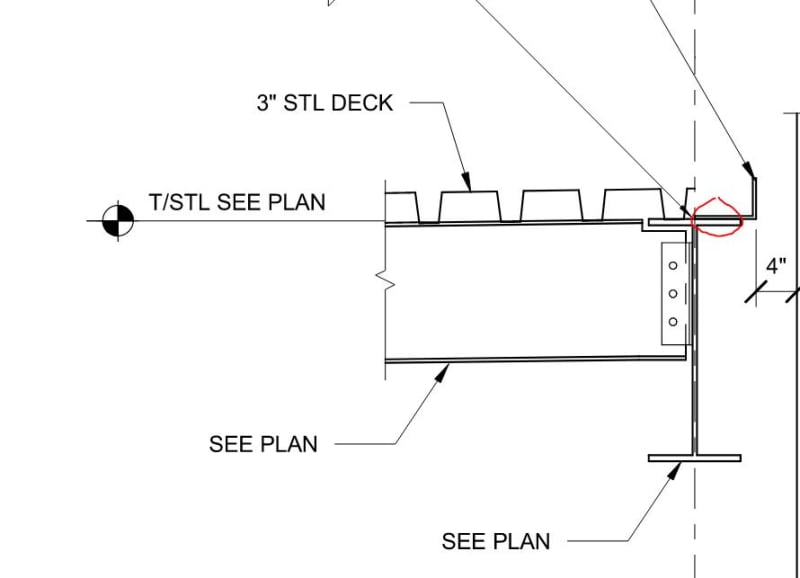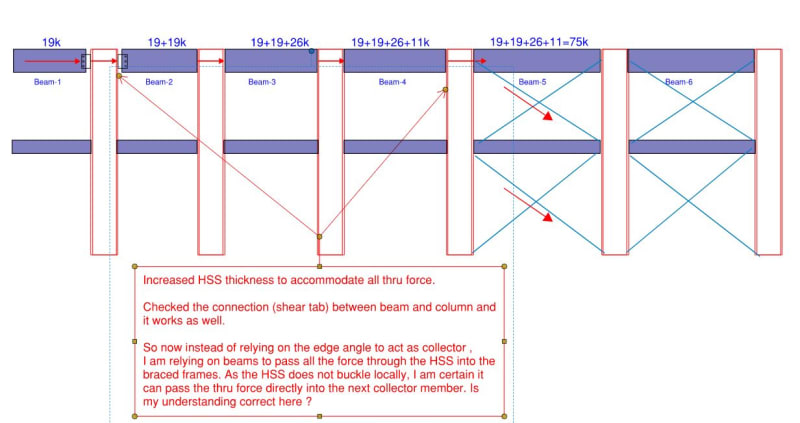Samwise Gamgee said:
So I just need to check the chord force as compressive/tensile force in the beams right. As the beams can take a significant amount of axial force, why would be ever use edge angle as a chord member then ?
This topic always gets a bit awkward for me as I wind up espousing ideas that I don't entirely agree with myself. Ahhhh well... reasons to use an angle:
1) Similar to what you've dealt with here, passing the axial load through an HSS column economically can sometimes be a challenge.
2) Often it's desirable to have short slotted holes in these connections for erection. To use those same holes for axial load, you then have to go and make them slip critical which adds cost, mostly inspection cost.
3) As I mentioned earlier, there are situations with OWSJ joists that lend themselves to the use of edge angles:
a) in roofs edge angles are often there for parapet support anyhow.
b) depending on what you're doing for joist rollover, you might want intermittent HSS lugs with angles continuous and welded to them.
c) roofs often have overhangs which tends to move the edge of the deck outboard of the main support lines. Some folks want the chord element at the extremity of the deck no matter what.
4) Once one says that the axial loads are in the beams, what does that mean when those beams change depths along the line, as they often do? Are there eccentricities that ought to be designed for? Probably.
5) Designing the beams as beam-columns for strong axis is no big deal as you've said. However, depending on your deck type, deck direction, and disposition of discrete bracing elements, sometimes designing the beams as beam-columns for weak axis buckling can be a challenge and add beam weight. Some folks will use the deck angles to address that by telling stories of this sort:
a) If the beam is capped with a member that can deal with the weak axis buckling on it's own, then the beam doesn't need to deal with it.
b) If the beam is made composite with a member that can deal with the weak axis buckling on it's own, then the resulting composite shape must be good for weak axis buckling.
Like I said, I don't believe everything about every structural engineering story that I've ever been told. These are the narratives that you hear out in the wild however.
OP said:
I was also considering just rebar to resist that chord force . So it would be close to 5-#4 bars
Hell yes, rebar is generally my first choice if there's a concrete deck kicking around. My only concern with with the rebar approach is that folks often wind up designing that to the max based on AsFy. If one extrapolates that result out to study the axial strain that it implies, sometimes that number is uncomfortable. When I do collectors in rebar, I often proportion them for strain rather than strength.




